2025 Americas Region Year in Review
Thirty years is a milestone worth celebrating. This year, across the Americas, our teams came together to celebrate 30 years of growth, resilience, and shared success. Every celebration was unique and reflected the strength of our people and the foundation that keeps us moving forward with confidence.
As we wrap up the year, we want to thank our employees, clients, and partners for their trust and support. Here are a few of the moments that made this year so memorable.
New Americas Head Office
We moved to a new location. The new location represents how modern consulting teams’ work. Flexible desks, larger client rooms, a hub for quick conversations, a gym, and easy access to transit and restaurants. People come in when it matters, which makes time together productive and meaningful.
Turning Expertise to Impact
AI has been part of every conversation we’ve had at work, over dinner, even on family group chats. Everyone’s curious. The big question we keep hearing is, “Is this really useful, or just hype?” To be honest, we’ve asked the same.
Our answer is simple. Start small. Focus on problems that matter. Deliver outcomes that teams trust. That’s where the real impact is.
Simplifying Knowledge Discovery
We fine-tuned our internal Answer Hub giving employees instant access to company policies, processes, and client stories easily. It is accurate, fast, simple, and always available. It frees our functional teams to focus on work that requires judgement, not repetition. For more complex needs, employees can still reach out to our individual functional teams.
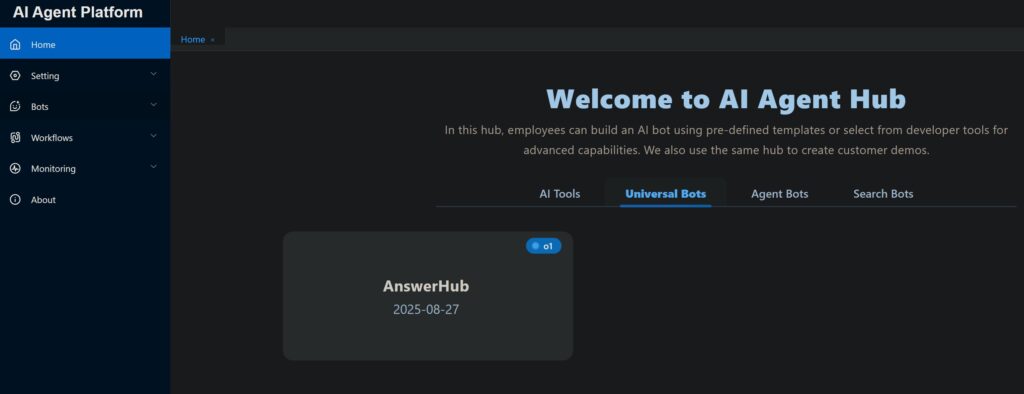
Smarter Fraud Detection
Most financial institutions still rely on rule-based detection that miss fast-moving threats. Our approach applies AI models that adapt, learn, and scale across banking, healthcare, telecom, and transportation. Watch this video to see how AI handles fraud detection.
Data Operations Assistant
Data checks grow in complexity as volumes rise. Our Data Operations Assistant automates routine validation, so data teams focus on higher-value decisions. It is fast, consistent, and reduces error rates. Watch this video to see how AI handles data checks.
Digital Employee System
Manual testing slows delivery. Our Digital Employee System lets you create and run tests through natural conversation. Every step is traceable, making issue resolution faster and easier. Watch this video to see how AI executes test cases.
Keeping Our Microsoft Expertise Sharp
Maintaining a Microsoft specialization requires a strict third-party audit and ongoing proof of expertise. We maintain these specializations to sharpen our knowledge and provide the best expertise to our clients. Most of our clients use a fraction of Microsoft solutions. A specialized Microsoft solution partner like us can help you increase that percentage, ensuring you are making full use of the product features and realize cost savings fast.
This year we added three specializations: Analytics and Build AI Apps for Microsoft Azure, Copilot for Modern Work, and we have earned Azure Expert MSP for three consecutive years (2023 to 2025).
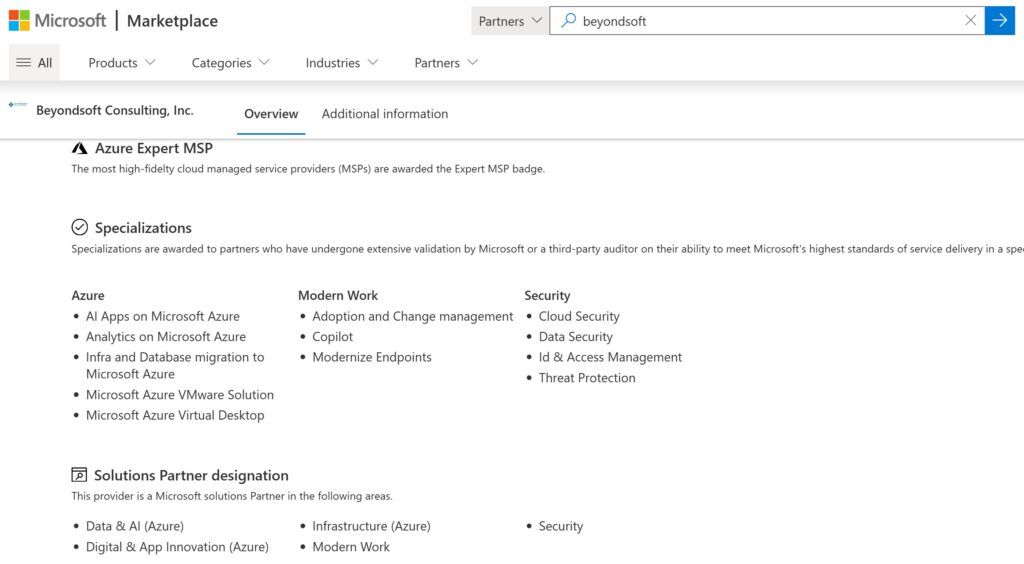
2025/2026 Cloud Awards Shortlist
We earned a shortlist spot for the 2025/26 Cloud Awards – Best Cloud Consultancy or MSP.
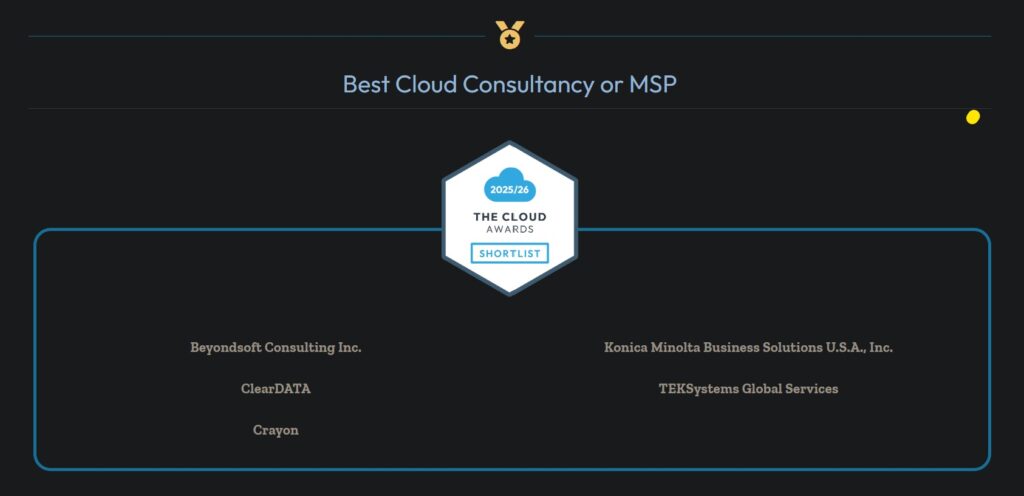
Leadership in AI era
Tools evolve fast and leadership remains critical. Why? Because AI is only as effective as the people guiding it. Human judgment, culture fit, and clear communication are what turn automation into actual business value.
When change is constant, our business leaders focus on alignment, clarity, and momentum:
Ajay Dixit reflects on how to stay grounded and focus on clear communication while moving fast in a competitive environment.
Eduardo Mecking encourages open dialogue and creating transparency to ensure his team feels supported and heard.
Joyce Luo shares how she creates calm in times of uncertainty and brings her team back to shared purpose.
Mark Ray shares why, especially during rapid change, and know that trust is non-negotiable.
Wing Liu embraces uncertainty, making tough calls, and standing by her team.
Thought Leadership Media Coverage
AI Readiness
Most companies are unsure whether AI is right for them. Fair question.
AI is only valuable when you and your team agree that it solves the problems on your terms. Patrick Tang shared practical tips on AI readiness.
Still not convinced? Our work shows that when AI is integrated into a people-centered culture, productivity and engagement grow in lasting ways.
Robotic Automation for Data Center Operations
AI is driving rapid expansion in data centers, creating new operational demands. We partnered with clients to deploy robotic automation that increases safety and improves uptime. Wing Liu details what works in the real-world environments in this article.
Driving Customer Success
This year we shared 12 customer stories that provided real-life examples of how our team partnered with our clients and their stakeholders to solve challenges in Insurance, Healthcare, High-Tech, and many others. One highlight: Microsoft featured Globo story on its Customer Story website. Here are the customer stories we captured in 2025:
A Hyperscaler Improves Data Center Operations with Robotic Automation and Tighter Process Control
Eneva’s Engineers Cut 20 hours in One Month Using Microsoft 365 Copilot
Globo’s Strategy in Adopting Microsoft 365 Copilot to Drive Continuous Innovation with Help from Beyondsoft
How One Tech Company Cut Through Licensing Complexity
A Global CDMO Replaces Scattered Communications with Centralized Collaboration Hub
Global CDMO Builds a Modern Enterprise Data Lake with Beyondsoft
Regional Financial Institution in Texas Revamps Data Workflows for Faster Delivery
One Calendar View Solves Ad Placement Chaos for a Top Tier Streaming Company
A Global Streaming Services Company Automates Almost 70% of Tasks with Salesforce Expertise from Beyondsoft
Keeping Critical Systems Running: How Beyondsoft Helped a Fortune 100 Client Stay Compliant
Real-time Test Lab Visibility into Operations Helps High-Tech Firm Improve Efficiency
Fostering a Strong Team Culture
Beyondsoft Brazil Earns Great Place to Work Recognition for Three Years
For third straight year, our Brazil team was named a Great Place to Work. The award reflects a culture built on support, trust, and a commitment to well-being. Larissa Ferreira, our Marketing Lead for Brazil has the scoop.
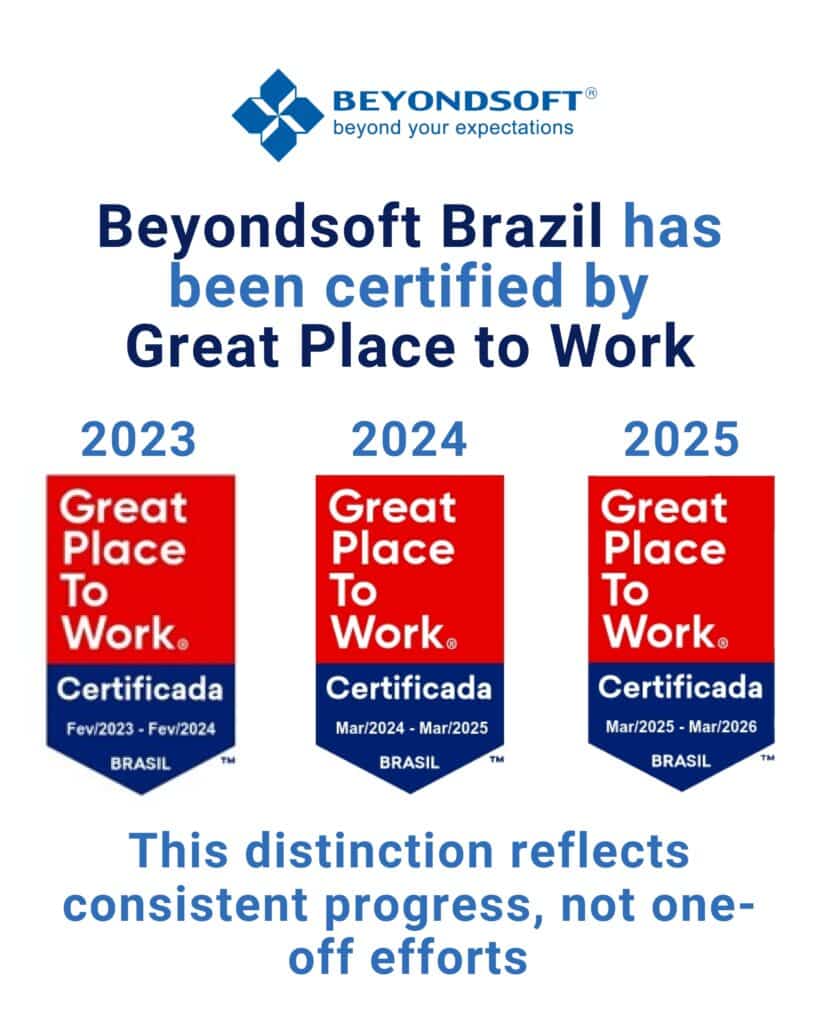
Team Event Across the Americas
Bellevue: Our Bellevue team members traded emails, Power Point decks, and spreadsheets for a dumpling-making session. Some of us were pros, creating restaurant-worthy pleats that looked like tiny pillows.
It was about slowing down, being intentional helping each other, learning, laughing, and celebrating the small wins (like finally sealing a dumpling without the filling bursting out).

Chicago: Our Chicago team members gathered for a picnic in the park with their families. Their laughter and sharing of weekend hobbies created a special bond between families and colleagues. These moments matter more than any team building exercise.
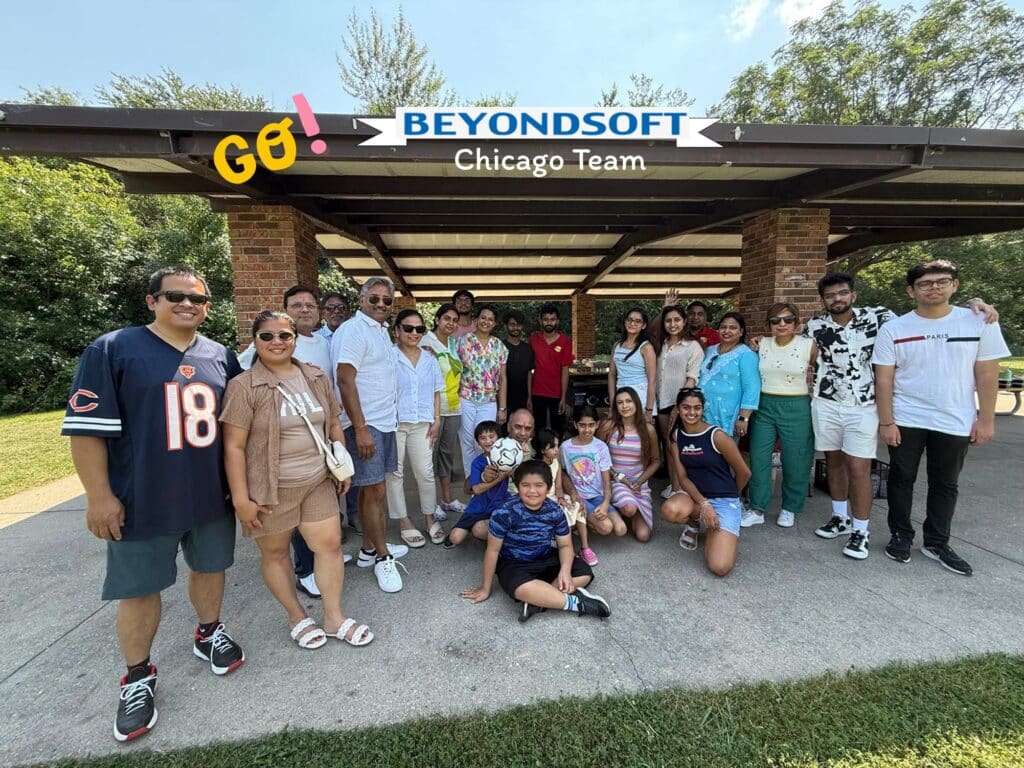
Dallas: Our Dallas team members came together with our clients and team members to build bikes for kids through Build-A-Bike. These bikes were donated to the 𝐁𝐨𝐲𝐬 𝐚𝐧𝐝 𝐆𝐢𝐫𝐥𝐬 𝐂𝐥𝐮𝐛 𝐨𝐟 𝐂𝐨𝐥𝐥𝐢𝐧 𝐂𝐨𝐮𝐧𝐭𝐲. It was great to connect outside of our usual work routines, all while giving back to the community.
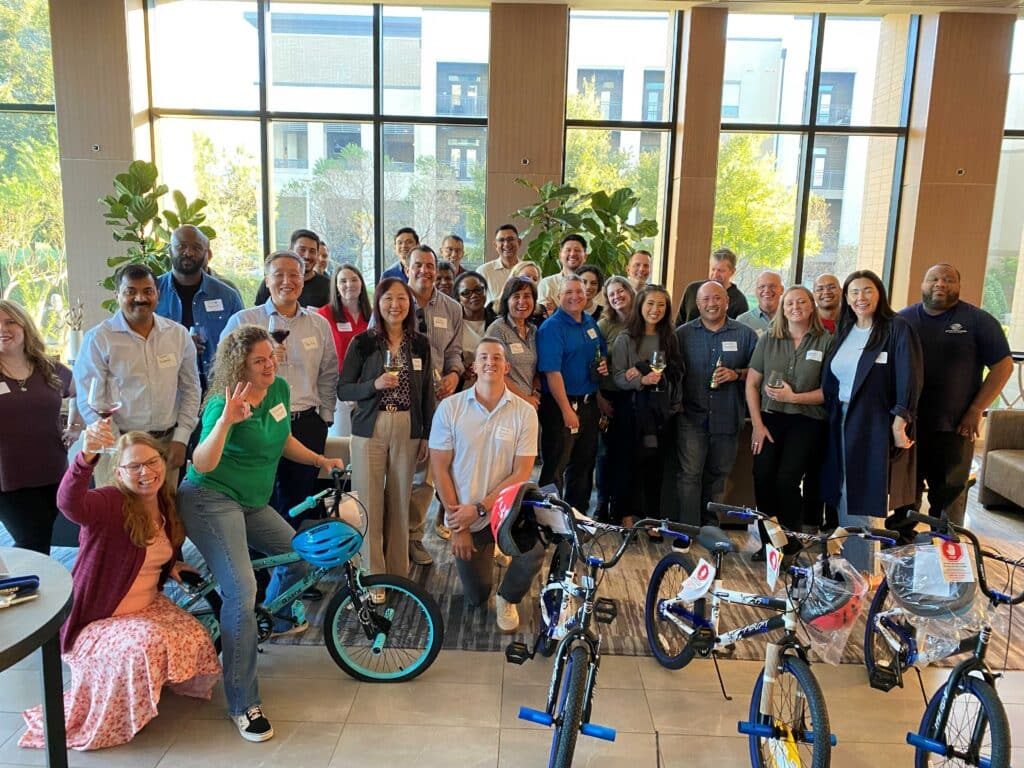
Paying it Forward
Giving back matters to us.
In April, we participated in the 2025 Society for Information Management (SIM) Houston Charity Golf Tournament. We proactively invite all golfers in the Houston area to participate in the round of golf and raise funds for Greater Houston Metro Area Science, Technology, Engineering, and Math (STEM) initiatives.

In June, our Chicago team members hosted 15 students from Stevenson High School to our Schaumburg office, and we exchanged thoughts on the need for lifelong learning, an essential mindset required to be successful in the working world.
Our team shared personal insights into:
1. Day-to-day responsibilities across consulting, IT, and project management
2. Core skills and mindset needed to thrive in a dynamic workplace
3. Strategies for building a business network and investing in personal brand early
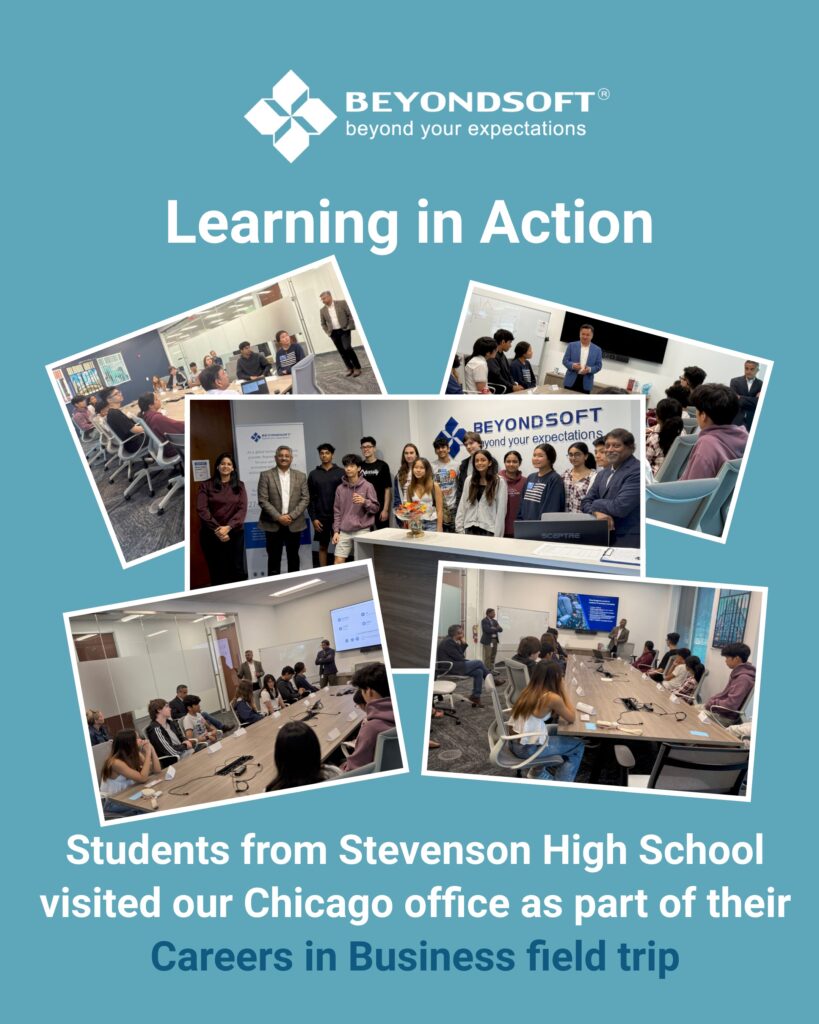
In October, we launched Eastside B2B Marketing Meetup, a place where marketers can meet face-to-face, swap stories, and learn from each other in a judgment-free zone. This free meetup is all about building real connections and having those honest conversations about B2B marketing that you don’t always get time for during the workday.
A Final Word
What a year! We moved our Americas head office to a new location, celebrated our 30th anniversary, expanded our Microsoft specializations, launched our AI platform, and earned a shortlist spot for 2025/2026 Cloud Awards – Best Cloud Consultancy or MSP. Microsoft even featured one of our customer stories on AI adoption. But what stands out most is our team. We show up for our clients, they give us space to innovate, and our people deliver. I’m excited to see where 2026 takes us.
Jasmine Jin, Managing Director, Beyondsoft Americas
Looking ahead, if you planning your next step in your digital journey, we’re ready to help you move with confidence and scale with speed. Contact us today and let us explore the future together.
